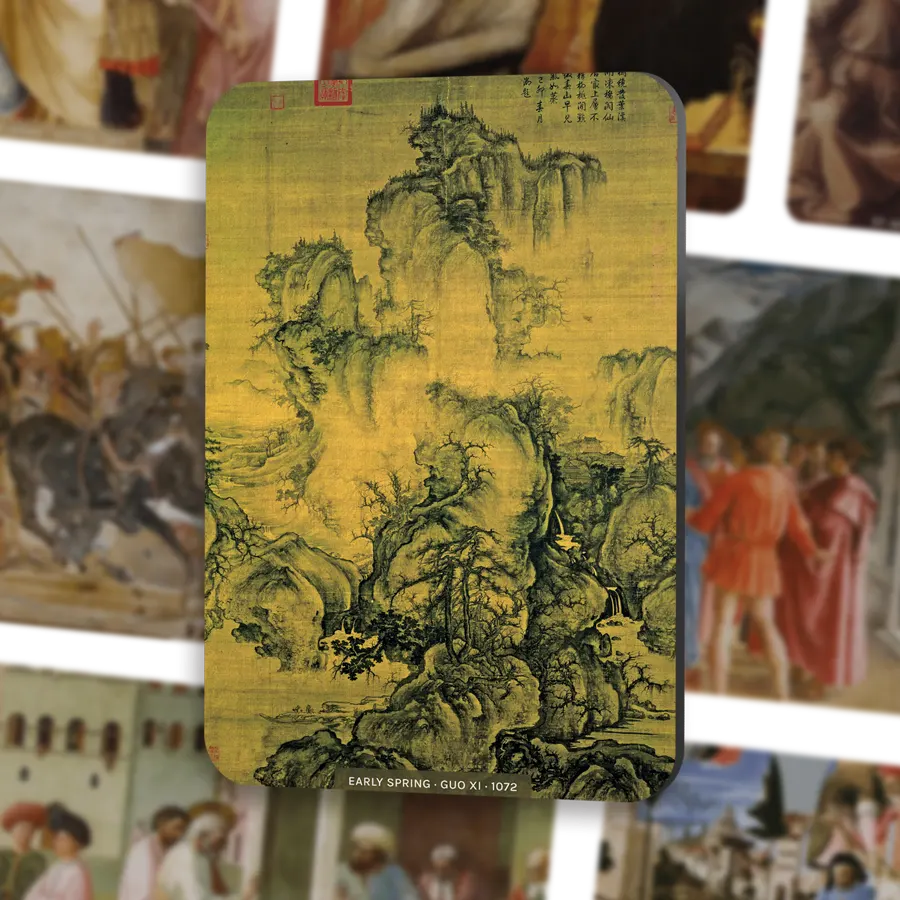Edvard Munch's painting The Scream is an iconic masterpiece that continues to captivate audiences with its haunting depiction of horror and despair. Created in 1893, this painting has become synonymous with Munch's name and has achieved a status that is unparalleled in the art world.
The History of the Scream
Edvard Munch: The Artist Behind the Scream
Edvard Munch, a Norwegian artist born in 1863, was the mastermind behind The Scream. Munch, who had a tumultuous personal life, often used his art as a means of expressing his internal emotions and the universal human experience. The Scream is an excellent example of how Munch sought to capture the depths of human despair and anxiety.
The National Museum: Home to the Scream
The Scream painting is housed in the National Museum in Oslo, Norway. This renowned museum is dedicated to preserving and showcasing Norwegian art and culture. Visitors to the museum can witness the raw intensity of The Scream up close, allowing them to fully appreciate its impact.
The Depiction of Horror in the Scream
The Scream is a chilling portrayal of horror and anguish. The central figure, with its pale face and wide-open mouth, appears to be screaming in agony. The swirling background adds to the sense of chaos and unease, effectively conveying the artist's inner turmoil.
The Symbolism in the Scream
An Exploration of the Foreground
The foreground figure in The Scream is often the focus of much interpretation and analysis. The contorted body and wide-eyed expression suggest a deep sense of unease and despair. Munch's use of exaggerated features and distorted perspectives adds to the unsettling nature of the painting.
The Auction and Theft of the Scream
In 1895, The Scream was sold at auction for a high price, solidifying its status as an iconic piece of art. However, over the years, there have been several high-profile art thefts involving The Scream. Its fame and value have made it an attractive target for thieves, resulting in multiple instances of theft and subsequent recovery.
The Scream's Iconic Status
The Scream has achieved an iconic status in the art world and has become ingrained in the collective cultural consciousness. Its portrayal of raw human emotion and existential angst resonates with audiences across generations. The image of the figure screaming in despair has been widely reproduced and referenced in popular culture.
The Evolution of the Scream
The Journey from Pastel on Cardboard to Final Tempera Painting
The Scream underwent several transformations throughout its creation. The initial version was done in pastel on cardboard in 1892, followed by an oil painting in 1893. Munch continued to refine his composition, eventually creating the final tempera painting in 1910, which is the most well-known and widely recognized version of The Scream.
The Sky and Fjord in the Scream
In The Scream, the sky and fjord play significant roles in setting the mood and enhancing the overall symbolism. The blood-red sky and the turbulent fjord in the background add to the sense of unease and impending doom depicted in the painting. These elements contribute to the overall haunting and eerie atmosphere that The Scream conveys.
Symbolism of the Human Figure in the Scream
The human figure in The Scream is a central symbol in the painting. Munch's use of a generic, faceless figure allows the viewer to project their own emotions and experiences onto the painting. The figure's contorted pose and open mouth evoke a sense of universal suffering and existential angst that transcends individual identities.
Interpreting the Composition of the Scream
The Figure Walking along the Road
In The Scream, there is a figure depicted walking along a road. This figure is often seen as a representation of Munch himself, observing the world and the anxieties it holds. The figure's hunched posture and outstretched hand suggest a desire for connection and understanding amidst a chaotic and indifferent world.
The Figure Along the Road with Two Friends
Another composition of The Scream features the figure walking along the road with two friends. This variation adds a sense of isolation, as the figure's friends appear completely oblivious to their surroundings. The contrast between the figure's anguish and the obliviousness of the friends intensifies the feeling of alienation and loneliness.
The Sun and Melancholy in the Scream
In one of Munch's journal entries, he described the moment that inspired The Scream: "Walking along the road with two friends - the sun went down - I felt a gust of melancholy." The sun setting in the background of the painting symbolizes the fleeting nature of happiness and the overwhelming presence of sorrow and melancholy.
Learn more about art and The Scream through Towards Modernity educational magnetic cards.
Q: What is the significance of Edvard Munch's painting, The Scream?
A: The Scream is one of the most iconic paintings in the world. It is known for its haunting imagery and its ability to evoke intense emotions in viewers. The painting is a reflection of Munch's own internal struggles and serves as a symbol of existential angst.
Q: Where can I view The Scream painting?
A: The Scream is housed in the Munch Museum in Oslo, Norway. It is also occasionally displayed at the National Gallery in Oslo and the National Gallery of Art in Washington, D.C.
Q: How much did The Scream sell for?
A: In 2012, one version of The Scream was sold at auction for a record-breaking price of $119.9 million, making it one of the most expensive paintings ever sold.
Q: Is The Scream a symbolist painting?
A: Yes, The Scream is considered to be a symbolist painting. Symbolism was a movement in art and literature that aimed to convey emotions and ideas through symbolic images rather than literal representations.
Q: What is the inspiration behind The Scream?
A: The inspiration for The Scream came to Munch while he was walking along a road with two friends. As the sun went down, he felt a gust of melancholy and suddenly saw the sky turn a bloody red. This experience deeply affected him and served as the catalyst for the painting.
Q: How many versions of The Scream exist?
A: The composition of The Scream exists in four forms. The first painting is done in oil and was created in 1893. There are also two pastel examples from 1893 and 1895 and a lithograph from 1895.
Q: When did The Scream make its first appearance?
A: The Scream made its first appearance in an 1893 exhibition in Berlin. It was met with mixed reactions but quickly gained recognition as an iconic human figure in art history.




